Varieties of white dahlias and the rules for their cultivation
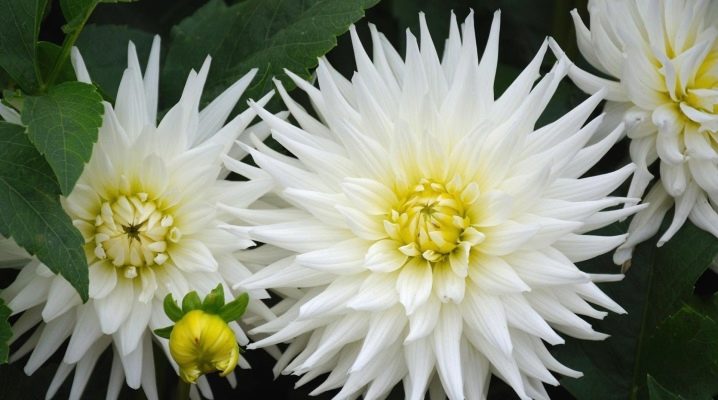
Dahlias are very beautiful flowers that rival those of roses in appearance. They are unpretentious, bloom from summer to the very frost. Dahlia belongs to the Asteraceae genus. There are about 50 known dahlia species. One of them is the white dahlia.
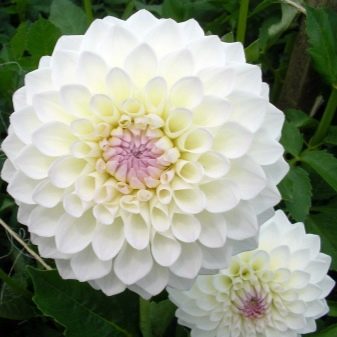
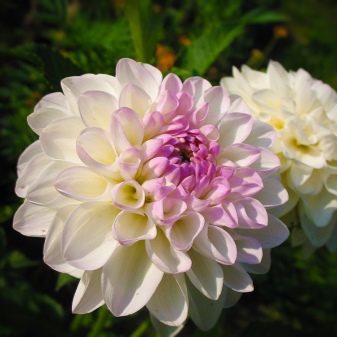
Characteristic
The flower is represented by an inflorescence with a rather intricate structure. Outside, it consists of open edge petals, and inside it is presented in the form of tubes. The roots are thickened, the shoots are succulent, the leaves are sharp with notches, their length is 40 cm. Dahlias grow in the central part of the American continent.
Tall dahlias can reach a height of up to two meters, medium-sized ones - one and a half meters and small ones - a little more than 50 cm.Every year, with the arrival of cold weather, the aboveground part of the plant dries up, and the one that is in the ground develops for many years. Because of this property, dahlia are referred to as perennials. If the plant does not have a tuber with a shoot, then it will not grow.

Varieties
Among the variety of varieties, several of the most famous white and white-pink dahlias can be distinguished.
- "White opera" is a miniature culture. Height does not exceed 30 cm. This variety differs from others in large-scale flowering. Several wide inflorescences are formed on one stem. This plant belongs to annual varieties, blooms until frost. This variety is used for planting in flowerpots and flower beds.

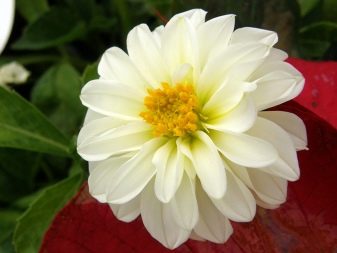
- "Mignon white" refers to dwarf plants. She will delight with flowers from the middle of the summer season to frost. This variety is used to create decor on a flower garden or flower bed.

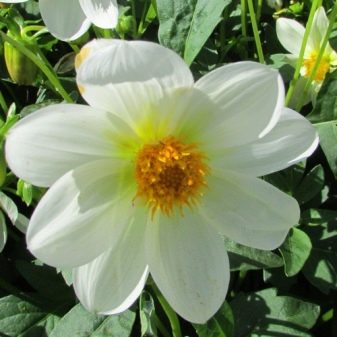
- "Evelyn" represented by a tall bush, with wide inflorescences, white flowers have pink blotches. This variety looks attractive both in a flower bed and cut in a vase. He loves a lot of warmth and light. He needs moderate watering to prevent stagnation of liquid in the soil.
For the winter, the tubers need to be dug up and stored in a cool, high-humidity environment.
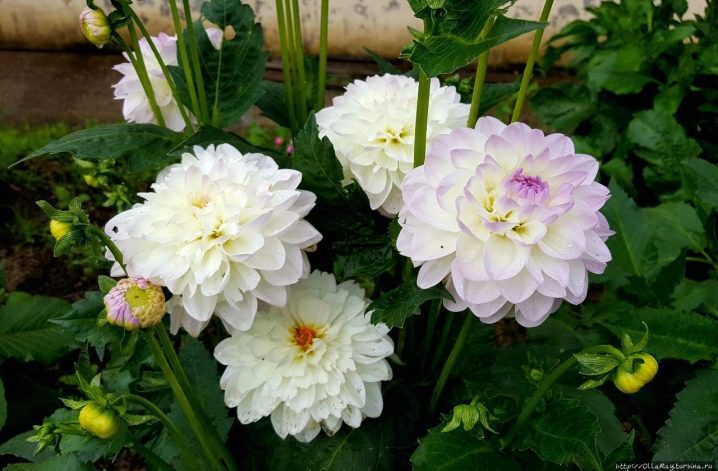
- "Pink Isa"... This species is characterized by white-pink flowers that resemble pompons. Under the sun's rays, the petals turn white. The bush is presented in miniature and medium sizes.
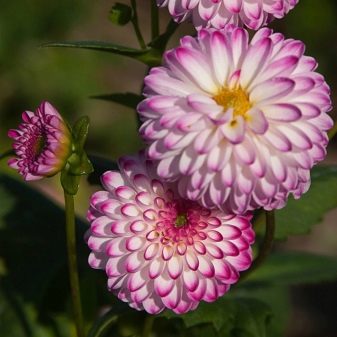
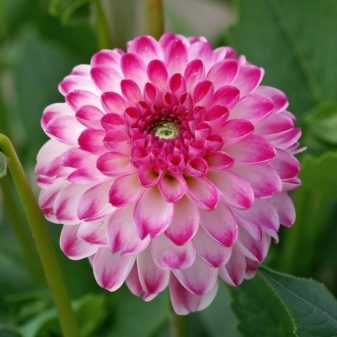
- "Stars Lady" represented by miniature bushes, up to 60 cm high. Inflorescences are up to 15 cm wide, of a white-cream shade with pink reflections at the tips. This variety blooms throughout the summer. He doesn't need to be tied up. These dahlias look great when grown in outdoor pots and pots.
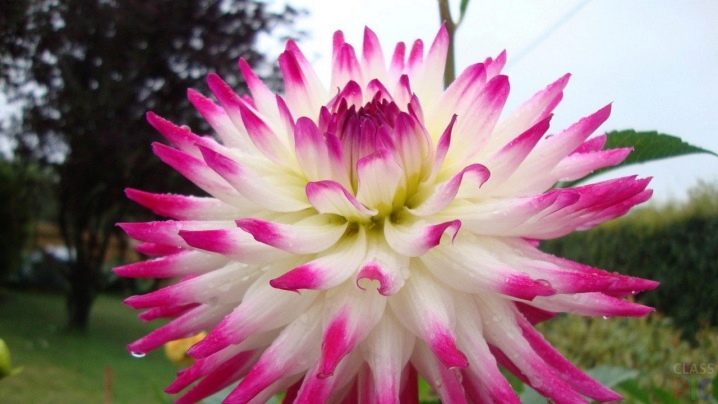
- "Melody of Dixie" - This is a variety with white-pink flowers and a red border around the edges. A low bush has wide inflorescences. It blooms for a very long time, while it prefers open, warm, lit places.
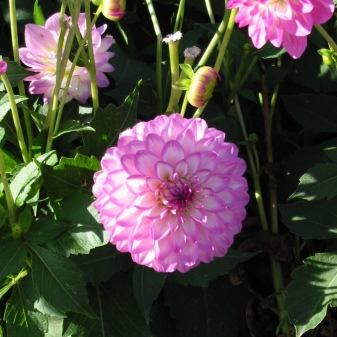
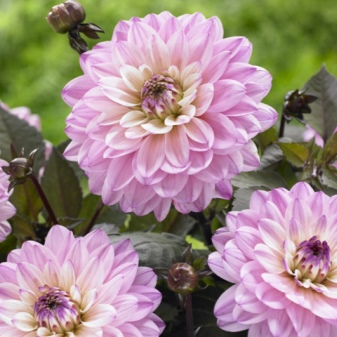
- Colorado Classic. A pink bush with white blotches has at least 80 cm, the width of the inflorescences is 17 cm. The petals are splendid, in addition, they are slightly twisted, so the flower looks more voluminous. This variety is known for its excellent disease and pest resistance. He loves a lot of sun and also good watering during flowering.
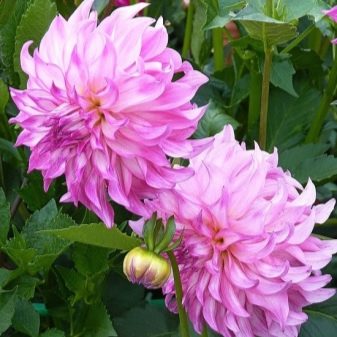
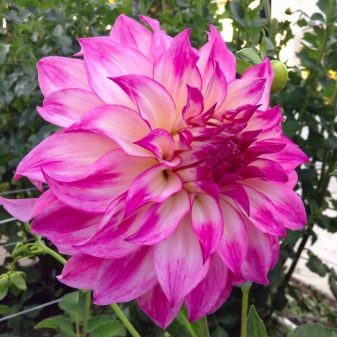
- "Pink giraffe" - this is the most unusual variety. The pink flower with white blotches and white tips resembles a star. The bushes are about a meter high.
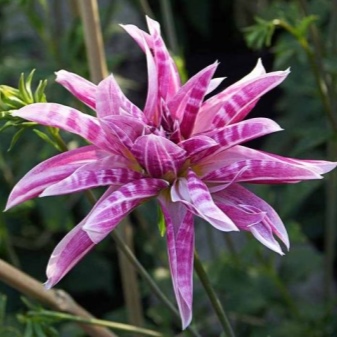
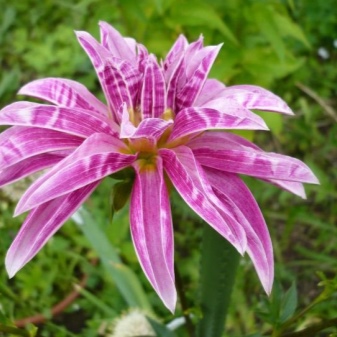
- "Snoho Diana" - This is a representative of tall dahlias. Flowers of extraordinary beauty, white with pink-burgundy tips. Inflorescences reach up to 20 cm wide.
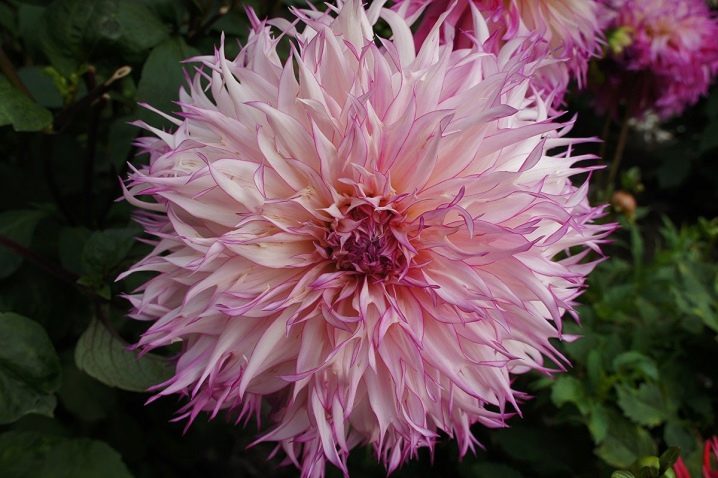
Landing
This process begins when the frost is over, since dahlias are very fond of light and warmth, they may not tolerate a significant drop in temperatures. They must be planted in unprotected soil in late spring or early summer. Plants like fertile, loose and nutritious soils, neutral or slightly acidic. Organic is well suited for feeding.
An important point is the choice of the territory for planting.
Dahlias do not like being in direct sunlight, as this can burn the leaves and cause them to dry out.
The most suitable place would be a lighted, but shaded area. The place must be protected from strong winds so as not to break the shoots. When planting, pits are made where the tubers are placed. At the bottom of the hole, you need to put a layer of organic fertilizers. Root deepening should not be done. The neck should be located above the surface at a height of 1 cm.
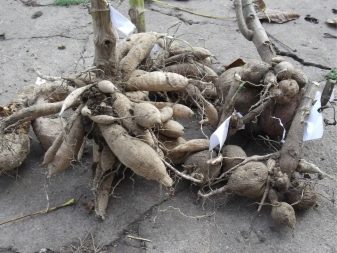

Culture care
Care consists in observing the following rules:
- so that the bushes do not break, they need to be tied up;
- periodically it is necessary to cut off damaged, weak and dry parts, although this does not apply to mandatory measures, but it can increase the decorative properties;
- the plant needs moderate watering, which should be carried out regularly at intervals of up to three times a week; the soil should be sufficiently moistened, but at the same time, moisture should not be allowed to stagnate, which can lead to decay of the roots;
- the plant needs feeding throughout the growing season, as well as before digging up the earth and planting.
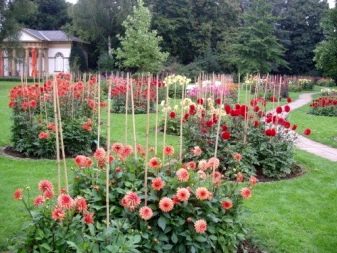

Reproduction
Dahlias breed in several ways.
- Using seeds... They are sown in the ground and then covered with polyethylene. After germination, the polyethylene is removed.
- By cuttings. From an adult plant, cuttings are cut, which should have several real healthy leaves and a size of at least 10 cm. At suitable temperatures, rooting occurs quite quickly.
- By splitting the root. That is, fragments are detached from the tuber root, which are planted in the holes.

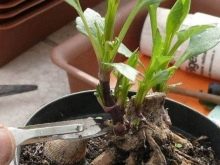
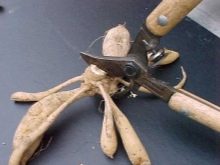
Reviews
Reviews of these colors are mostly positive. Many people like soft shades of flowers and undemanding care. Of the negative ones, one can single out the fact that with the onset of cold weather, the rhizomes of dahlias must be dug up and provide acceptable storage conditions for them. Another disadvantage is the very expensive planting material.
In order for a plant to delight with beautiful flowers, it is necessary to create optimal conditions for it.
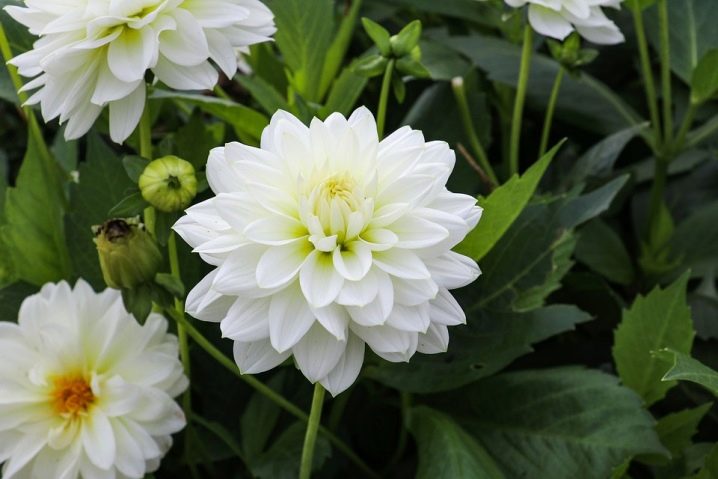
For general advice on caring for dahlias, see below.







































































































The comment was sent successfully.